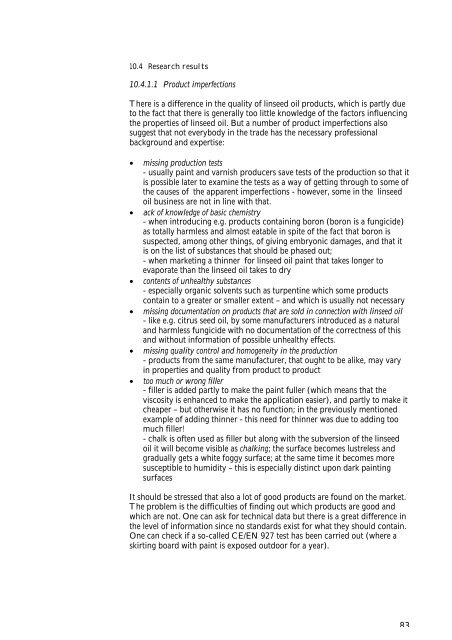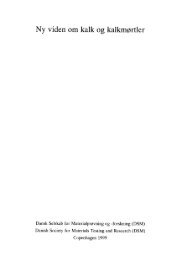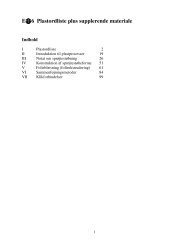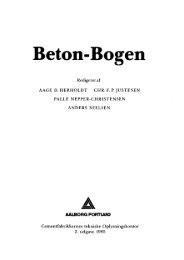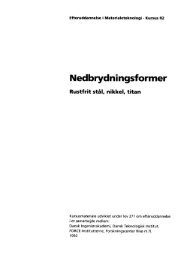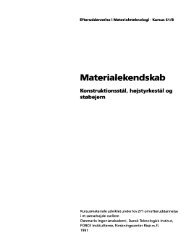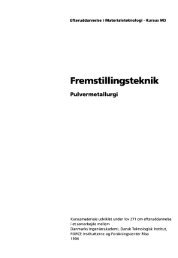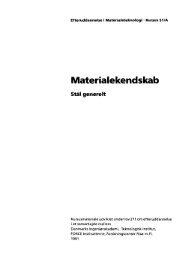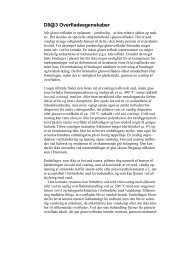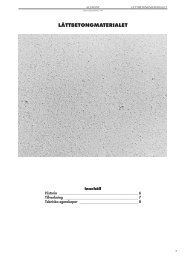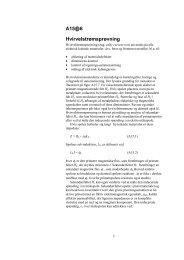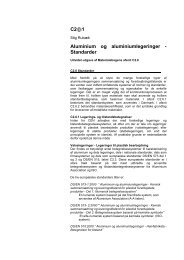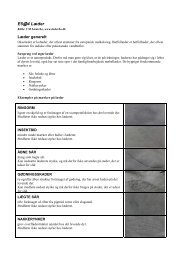Linolie til overfladebehandling af udvendigt træværk - Materials.dk
Linolie til overfladebehandling af udvendigt træværk - Materials.dk
Linolie til overfladebehandling af udvendigt træværk - Materials.dk
You also want an ePaper? Increase the reach of your titles
YUMPU automatically turns print PDFs into web optimized ePapers that Google loves.
10.4 Research results<br />
10.4.1.1 Product imperfections<br />
There is a difference in the quality of linseed oil products, which is partly due<br />
to the fact that there is generally too little knowledge of the factors influencing<br />
the properties of linseed oil. But a number of product imperfections also<br />
suggest that not everybody in the trade has the necessary professional<br />
background and expertise:<br />
• missing production tests<br />
- usually paint and varnish producers save tests of the production so that it<br />
is possible later to examine the tests as a way of getting through to some of<br />
the causes of the apparent imperfections - however, some in the linseed<br />
oil business are not in line with that.<br />
• ack of knowledge of basic chemistry<br />
- when introducing e.g. products containing boron (boron is a fungicide)<br />
as totally harmless and almost eatable in spite of the fact that boron is<br />
suspected, among other things, of giving embryonic damages, and that it<br />
is on the list of substances that should be phased out;<br />
- when marketing a thinner for linseed oil paint that takes longer to<br />
evaporate than the linseed oil takes to dry<br />
• contents of unhealthy substances<br />
- especially organic solvents such as turpentine which some products<br />
contain to a greater or smaller extent – and which is usually not necessary<br />
• missing documentation on products that are sold in connection with linseed oil<br />
- like e.g. citrus seed oil, by some manufacturers introduced as a natural<br />
and harmless fungicide with no documentation of the correctness of this<br />
and without information of possible unhealthy effects.<br />
• missing quality control and homogeneity in the production<br />
- products from the same manufacturer, that ought to be alike, may vary<br />
in properties and quality from product to product<br />
• too much or wrong filler<br />
- filler is added partly to make the paint fuller (which means that the<br />
viscosity is enhanced to make the application easier), and partly to make it<br />
cheaper – but otherwise it has no function; in the previously mentioned<br />
example of adding thinner - this need for thinner was due to adding too<br />
much filler!<br />
- chalk is often used as filler but along with the subversion of the linseed<br />
oil it will become visible as chalking; the surface becomes lustreless and<br />
gradually gets a white foggy surface; at the same time it becomes more<br />
susceptible to humidity – this is especially distinct upon dark painting<br />
surfaces<br />
It should be stressed that also a lot of good products are found on the market.<br />
The problem is the difficulties of finding out which products are good and<br />
which are not. One can ask for technical data but there is a great difference in<br />
the level of information since no standards exist for what they should contain.<br />
One can check if a so-called CE/EN 927 test has been carried out (where a<br />
skirting board with paint is exposed outdoor for a year).<br />
83


